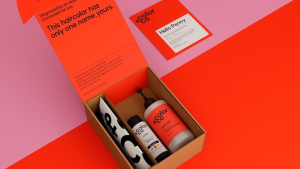
By: Katherine Nguyen, Integrated Marketing Coordinator
As the brand enters its 110th year in the beauty industry, L’Oreal is looking for a refresh. With the recent unveiling of what it refers to as ‘marketing 3.0,’ the beauty giant is diving into a period of transformation it hopes will lend a hand in maintaining its relevancy in a rapidly changing marketing landscape.
From transforming the structure of its internal marketing team to reimagining strategy – the brand has made great strides in embracing this new era of digital transformation.
While we have made brief mentions to some of the approaches the brand has implemented, how do these factors actually come into play? What can we learn from these efforts?

Bringing Beauty Online
Testing products is a defining element of the makeup experience. But up until now, most of the “try before you buy” phenomenon has happened in-store, at makeup counters. L’Oreal has changed that.
Last year, the brand purchased an augmented reality beauty company called ModiFace, allowing it to test features like virtual makeup, hair-color try-ons and even online skincare diagnostics. Earlier this year, L’Oreal announced it would bring ModiFace’s AR technology to Amazon to create a virtual try-on experience for the retailer in an effort to personalize the buying experience and solve common consumer problems when it comes to product selection. Eliminating the need for products to be tried on in-store.
The brand’s acquisition of ModiFace is a move that is consistent with its evolving digital strategy, which has become very much necessary as ecommerce makes up roughly $3 billion of L’Oreal’s annual sales and 50% of its annual growth.

Doubling Down on Direct-to-Consumer Sales
Color&Co is L’Oreal’s DTC personalized hair color brand that was introduced three months ago from its tech incubator, which runs in partnership with Founders Factory, a leading global digital accelerator and incubator.
As a part of this partnership, the brand has had the opportunity to discover and collaborate with other digitally savvy businesses that also work with the incubator, allowing L’Oreal to further cultivate its relationship with the internet and stays consistent with the brand’s commitment to the digital-first mindset.
New Marketing Codes
The beauty playing field is a vastly different place now than it was a decade ago. As digital has lowered the barriers to entering the market, new brands are quickly entering the beauty space, offering L’Oreal stiff competition.
However, even with a slew of new competitors, the brand has continued to hold its own, with growth of up to 7.1% coming from its string of subsidiaries including L’Oreal Paris, Lancôme and Maybelline.
L’Oreal shows no signs of slowing down any time soon and serves as a testament to the idea that legacy brands can still grow so long as they adapt their mindset and embrace new marketing codes.